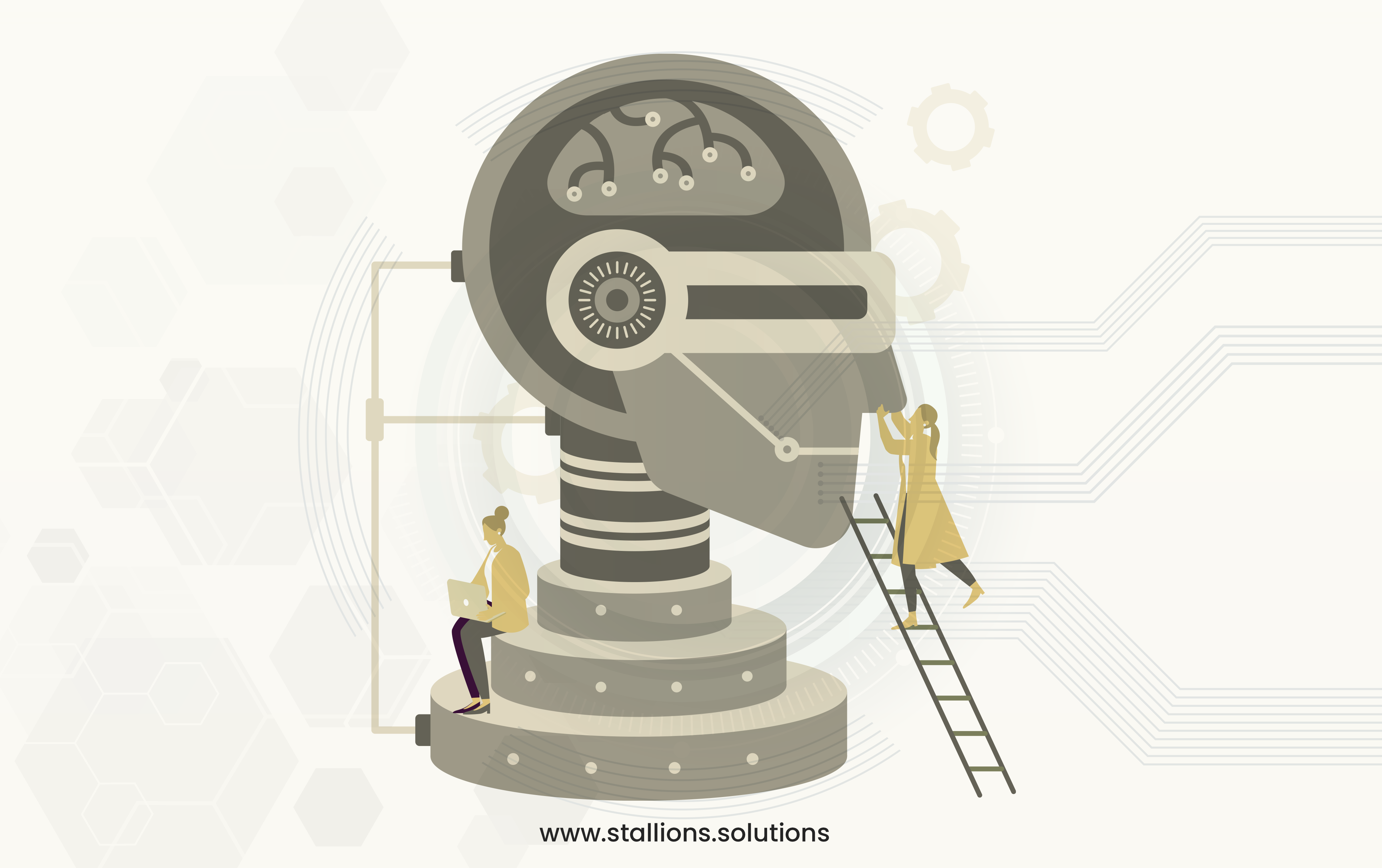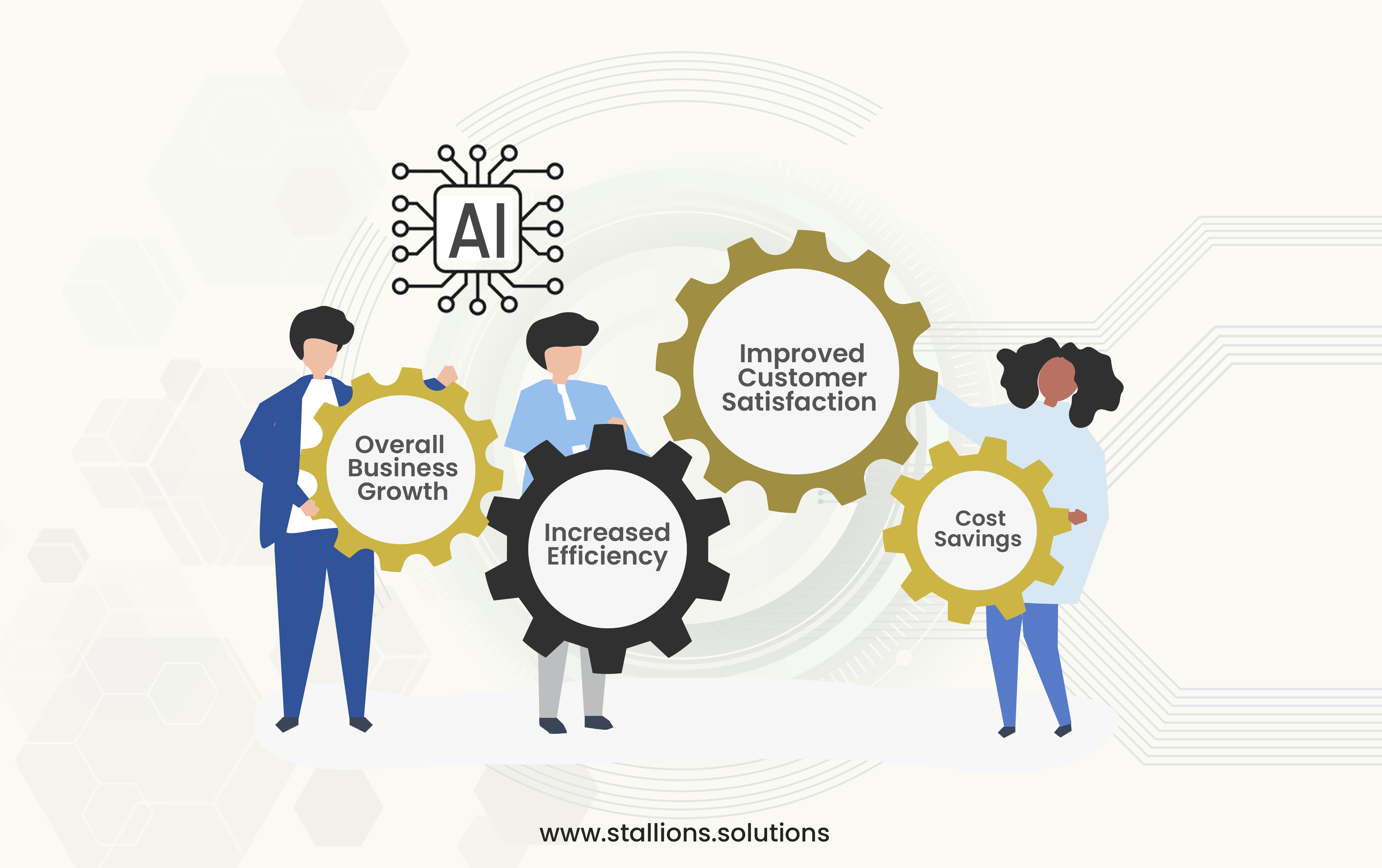Artificial intelligence (AI) is changing how companies work in every industry, from finance to healthcare, and everything in between. But putting AI solutions into use at your company can be a difficult task, particularly if you don’t know much about the technical side of things.
Statistics show that about 35% of companies currently use AI in their daily operations. This article will teach you all you need to know about integrating artificial intelligence (AI) into your business workflow. It will cover everything from identifying areas where AI can be successful to choosing the best tools and providers to guarantee success.
What is Artificial Intelligence?

The goal of artificial intelligence (AI), a broad field of computer science, is to create intelligent machines that can carry out tasks that normally call for human intelligence. Even though artificial intelligence (AI) is an integrated discipline with many different techniques, developments in machine learning and deep learning are revolutionizing almost every area of the tech sector.
Machines with artificial intelligence can duplicate or even exceed human mental capacities. As dynamic AI tools like ChatGPT and Google’s Bard grow and self-driving cars become more common, artificial intelligence (AI) is becoming more and more integrated into daily life, and businesses in every sector are making investments in this field.
Benefits of AI in Business
The use of artificial intelligence (AI) has revolutionized commercial operations. The top 10 advantages of AI in business are as follows:
Increased Efficiency
Routine tasks can be automated, giving staff members more time to concentrate on important work.
Improved Accuracy
AI systems are faster and more accurate than humans in analyzing vast volumes of data.
Enhanced Personalization
Based on their tastes and behaviors, it may help businesses in providing their clients with more individualized experiences.
Enhanced Ability to Make Decisions
Businesses can get insights from AI-powered solutions that help them make better decisions.
Cost Savings

It increases productivity and lowers labor costs for businesses by automating processes.
Competitive Advantage
Early AI adoption by businesses can give them a competitive edge over later adopters of similar technologies.
Risk Reduction
By examining data and spotting trends and defects, it helps in detecting and reducing risks.
Increased Client Support

Chatbots and virtual assistants driven by AI can offer 24/7 customer service, hence improving customer satisfaction levels.
Creative Thinking
Artificial Intelligence (AI) can help firms in innovating new goods, services, and business models by revealing new insights from data.
Flexibility
It can help companies in expanding operations swiftly and effectively without needing to hire many new staff members or resources. It is especially helpful in sectors of the economy where demand is inconsistent or expanding quickly.
How Can AI Be Used in a Business?
Here are some easy steps to consider while implementing AI in business.
Identify Areas in your Business That Could Benefit From AI Implementation
Finding areas of your company where AI implementation could be beneficial is the first step. Data analysis and customer service are examples of repetitive and time-consuming jobs that may fall under this category. It might also cover industries like manufacturing or financial services where accuracy and speed are essential.
Explore Various AI Solutions and Providers
To identify the greatest fit for your company’s goals and budget, you need to explore and compare different AI technologies and services. When choosing the best supplier, consider the following aspects:
- The provider’s background and proficiency in your industry.
- The AI solution’s degree of adaptability and personalization.
- The data security protocols and regulatory compliance of the provider.
- The AI system’s price and possible return on investment
Develop a Plan For Implementation
This involves setting deadlines, assigning tasks to team members, and defining reasonable goals. Here’s how to accomplish it:
- Define the scope of the AI system and target specific use cases.
- Make a project plan that includes deliverables, deadlines, and milestones.
- Assign team members tasks and responsibilities and make sure they have the tools and resources needed to carry out the solution.
- Determine potential risks and difficulties and create backup measures to lessen them.
Assess Data Availability and Quality for AI Implementation
The type and volume of data utilized to train AI systems have a significant impact on their success. Consequently, you need to make sure that you have adequate high-quality data on hand for AI applications. If not, before putting an AI solution into place, think about collecting more data or enhancing the quality of already existing data sources. This is what you should do:
- Assess the amount of data available and, if not, create a plan to enhance the quality of the current sources or gather additional data to train the AI model
- Consider applying methods like processing and data cleaning to make sure your data is reliable and consistent
- Consult with professionals in data science or machine learning to find any problems with your data and solutions. You may optimize the efficiency of your AI solution and achieve better commercial results by guaranteeing high-quality data.
Create a Strong Team to Support and Manage AI Implementation
Hiring experienced engineers, data scientists, and project managers is necessary to supervise the deployment procedure, train staff members on using the AI tools, and resolve any problems that may develop. You must establish an innovative organizational culture and promote ongoing development to guarantee that your staff members fully utilize AI technology.
Launch a Pilot Project to Evaluate AI’s Potential Benefits for Your Company
Testing allows you to evaluate the effect of AI on your company and spot any possible problems before investing in a full-scale deployment. To make sure the AI solution satisfies the needs and expectations of both consumers and staff, you can collect feedback through a pilot project. You can move forward with implementing the AI solution throughout your entire organization if the pilot project proves to be effective.
Establish clear guidelines and protocols for using AI

It involves developing data security and privacy policies, defining the scope of AI applications, and deciding how judgments will be made and assessed. Make sure your policies are simple to read and comprehend for your staff.
These rules must be periodically reviewed and updated considering emerging technologies and shifting business requirements. By doing this, you can make sure that your company takes full use of AI’s advantages while lowering any risks or adverse effects.
Create a Strategy for Evaluating the Effect and Performance of AI Integration on Your Business Objectives

To make sure that your investment in AI technology is valuable, you must develop a plan for evaluating the effectiveness and impact of AI implementation on your company goals. Define precise metrics and key performance indicators (KPIs) to determine how well AI solutions are working to accomplish your company’s goals. It involves tracking several elements, such as:
- Cost savings
- Increased efficiency
- Improved customer satisfaction
- Overall business growth
Investing in Continuous Learning and Development to Stay Current With AI Advancements
It consists of:
- Provide chances for education and training to staff members so they can advance their AI expertise.
- Keeping up with new advancements and trends in the industry, such as new data analysis methods or algorithms.
By focusing on continuous learning and development, your organization can:
- Adapt and stay competitive in a corporate environment that is always evolving.
- Create an environment that values creativity and cooperation.
- Encourage staff members to try fresh concepts and methods for applying AI to problem-solving.
Conclusion
AI deployment in business has the potential to transform everything, but success requires careful strategy and execution. By following the instructions provided in this guide, businesses can successfully incorporate AI into their operations and enjoy the advantages of increased productivity and efficiency.
When integrating AI, there are a lot of things to consider, from determining which areas it may have the greatest influence on to choosing the appropriate tools and platforms. In a world that is becoming more and more dependent on technology, you may set yourself up for long-term success with the appropriate plan and method.



